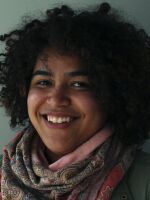There are a few things we know about health care that are true for everyone. For one thing, it's expensive. It's a nearly $3 trillion industry in the U.S. Also, it's not easy to do well. Mortality rates and hospital admission rates for preventable diseases are higher in the U.S. than other Western countries.
So, given that treating people is already a challenging task, imagine the extra challenge that comes from treating people who experience toxic stress — the stress that comes from constant exposure to poor housing conditions, lack of quality food or exposure to violence.

Those are the kinds of patients that Dr. Heidi Miller treats at the Family Care Health Center in the Grove neighborhood. Not all of Miller's patients endure toxic stress, but enough do that Miller realized that her medical training didn't serve her patients very well.
"I was taught what normal physiology was and what pathology was. Seven years of learning how to identify a nail that I could then hammer," Miller said. "Over 12 years of maturing as a physician, I've realized that human suffering does not come down to one medical problem with a pill that solves it. The vast majority of my patients are in some capacity suffering from stress in their lives now or in their past."
The clinic where Miller works is one of four systems of Federally Qualified Health Clinics (FQHC) in the St. Louis region serving more than 130,000 people. There are dozens of other medical facilities that treat patients from all income levels. But we decided to focus on a health center that receives federal money to treat uninsured patients because the problems that low-income people suffer are emblematic of how difficult it can be for someone to overcome the systemic disadvantages that accompany poverty.
Here are some facts and figures that help explain who uses these community health centers and what challenges they face.
Family Care Health Centers has two locations, the Grove and in Carondelet. All numbers are for 2014.
- Number of patients the two clinics serve: 20,048
- Percent of uninsured patients who visit the clinics: 34.3
- Percent of Medicaid or CHIP 2 patients: 40.5
- Percent of Medicare Patients: 8.6
- Patients who income are at or below 200 percent of the federal poverty rate (defined as $23,850 a year for a family of four) : 66 percent
Racial breakdown of the patients who go to the Family Care Health Centers:
- White/Caucasian: 53.2 percent
- Hispanic/Latino: 7.8 percent
- Black/African American: 28.3 percent
- Asian: 3.7 percent
In Missouri, where Medicaid has not been expanded under the Affordable Care Act, 11 percent of the population is uninsured. About 13 percent of the population is on Medicaid and another 19 percent on Medicare. The breakdown by race looks like this:
- Number of white, non-elderly people insured by employer: 2,421,100
- Number black, non-elderly people insured by employer: 297,400
- Number of white, non-elderly people on Medicaid: 533,800
- Number of black, non-elderly people on Medicaid: 218,900
Here is a map of the region showing all the health-care facilities in the region, FQHC or otherwise.




